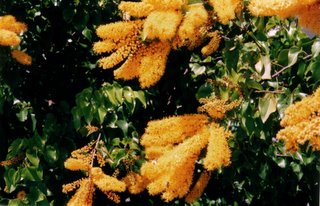Opportunity to have your say on Marine Park management (Gladstone LMAC)
Media Release from GBRMPA website:
Tuesday 22 November 2005
The Great Barrier Reef Marine Park Authority is inviting people from the Gladstone region to have their say on Marine Park management by joining the Gladstone Local Marine Advisory Committee.
Great Barrier Reef Marine Park Authority Chairman, The Hon. Virginia Chadwick AO, said the committee gave people an opportunity to advise the Authority on the conservation and sustainable use of their coastal and marine environments.
“The committee provides a forum for representatives from local interest groups, the community, and management agencies to discuss management of the Great Barrier Reef Marine World Heritage Area,” she said.
“We encourage nominations from a range of stakeholder groups, including recreational and commercial fishers, tourism, Indigenous, conservation, catchment managements, port authorities, relevant industries, local government and interested individuals.”
Gladstone Local Marine Advisory Committee Chairman Warwick Sheldon said it was important that all groups who have a stake in the Marine Park nominate for membership to the committee.
“Over the past three years the Gladstone Local Marine Advisory Committee has been able to advise and influence Federal, State and local government organisations on issues relating to the Great Barrier Reef Marine Park in our local area,” he said.
“This is an excellent opportunity for people who have an involvement or genuine interest in the management, conservation, and ecologically-sustainable use of the Great Barrier Reef World Heritage Area to become directly involved and have a say in its management.”
Membership to the Local Marine Advisory Committee is voluntary and membership renewal occurs every three years. The Committee meets six times a year.
There will be 11 Local Marine Advisory Committees operating along the coast from Cooktown to Bundaberg.
For details on how to apply, call Tracey Rehbein on 4750 0732.
Communications Unit
(07) 47 500 846 [day & evening]
Email: media@gbrmpa.gov.au
Monday, November 28, 2005
Wednesday, November 16, 2005
'Plants and fungi poisonous to people in Queensland'
This very compact and informative booklet has fantastic photos, and a brief description of each plant and its toxic characteristics. There is even a "Toxicity category" for each plant and little pictograms to show whether it is poisonous to the skin, eyes, or is deadly if ingested.
Available from the Gladstone SGAP library
Monday, November 14, 2005
Tuesday, November 08, 2005
 Barklya syringifolia
Barklya syringifolia"Crown of Gold"
Floral emblem of Gladstone Qld
Photo by R. Crosson, 28 Oct 2000
Text below from: A Horticultural Guide to Australian Plants, The Society for Growing Australian Plants, Q78 Set 4 Sheet 9
Barklya syringifolia F. Muell
Family: Leguminosae
Derivation: Barklya - after H. Barkly, a Governor of Victoria, syringifolia - lilac leaved
Common name: no generally accepted common name
Varieties and forms: a fairly uniform species with no marked variations
Flowers: Golden yellow to orange, about 1 cm long in terminal cylindrical racemes about 20cm long, forming a dense panicle.
Flowering period: Spring to Summer
Growth habit: Medium tree
Height: 7 to 20m in rainforest, usually up to 7m in cultivation
Spread: up to 7m
Natural Distribution: Coastal Qld from about the border to Mackay
Habitat: Rainforest
Climatic tolerance: Annual rainfall: 1000 to 1600mm. Temperature range: 5 to 35 degrees Celcius
Propagation: Seed
Additional comments: The leaves are broadly heart-shaped, about 4 to 5cm in diameter. An excellent tree for coastal tropical and subtropical regions, but adapts to warm sheltered position as far south as Melbourne. It is not recommended for districts with a low rainfall or subject to severe frost except as a container plant in a glasshouse. Ideally suited to deep, rich well-drained soil with a good rainfall. It tends to be slow growing initially. best growth occurs during Autumn. Magnificent in flower but worth growing just for the attractive heart-shaped foliage with impressive bronze new grwoth. Seed matures 4 to 5 months after flowering. It is sometimes incorrectly assumed to be a member of the Proteaceae family. Resistant to most pests and diseases.
Subscribe to:
Posts (Atom)



